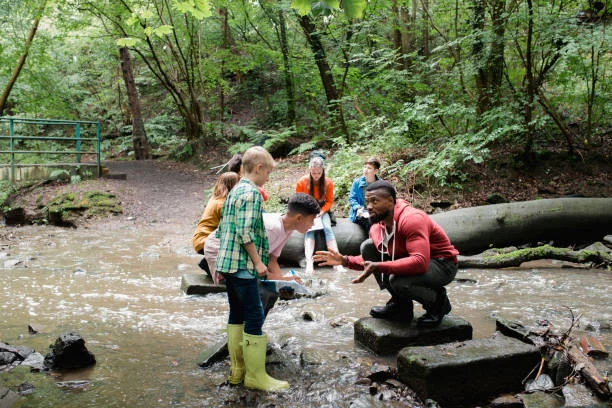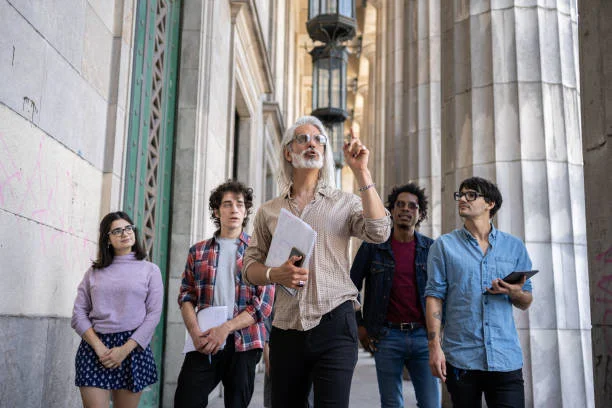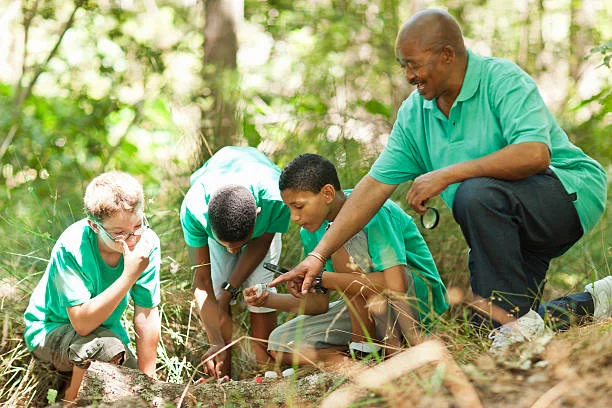Introduction to E-Learning Lectures for Teaching and Pedagogy

Group of school children on a field trip. They are standing in a river looking for wildlife while listening to their teacher.
welcome to this series of e-learning lectures prepared to enhance your learning in teaching and pedagogy. If you haven’t been here before, then welcome to the Univ English Channel. This is the lecture four teaching approaches, methods, procedures, techniques and strategies. These are teaching terminologies, concepts, principles of teaching tools and teaching methods needed in every teaching and learning situation. If you like videos like this, please stop.
Hit the subscribe button and also hit the notification bell to get notified when I produce more videos like this. Also, let me know about the comments. What are the biggest problems you are facing right now? So I can use your ideas for future videos. In the teaching learning process, we need to understand some concepts that are very common. However, these concepts can sometimes confuse educators if they do not have a clear definition of them.
Understanding Teaching Approaches and Terminologies
In this video, we will introduce you to the definition and define the main differences between teaching approaches, methods, processes, techniques and strategies. English language teaching terminology can sometimes confuse these poles when trying to describe the difference between approach method process and technique. Teaching approaches an overview that applies to learning for all kinds of learners.
It is a set of principles, beliefs or ideas about the nature of learning, translated into the classroom. For example, we learn from psychology that a person’s ability to learn starts from the simple to the complex, just as a child first learns how to add, subtract, multiply, and divide before learning fraction and later doing algebra. An approach refers to the general about what language is and how learning a language happens.
Approaches are teachers’ philosophies about language teaching that can be implemented in classrooms using different language teaching techniques. In other words, an approach to language teaching describes the nature of language, how language knowledge is acquired, and the conditions that promote language acquisition.
Investigation of Teaching Methods and their Practical Applications

Professor walking around campus with his students talking about its history
A teaching method is a practical application of an approach. A theory is put into practice at the level of a method. Methods are the combination of techniques used and applied by teachers in classrooms to teach their students. It includes decisions about the specific skills to be taught and focuses on the roles of the teacher and learner in language teaching and learning, the appropriate procedures and techniques, the content to be taught and the order in which the content will be presented. .
It also includes a specific syllabus, organizational choices of materials that will enhance learning, and means of assessing students and evaluating teaching and learning. This is the systematic way of doing something. It implies an orderly, logical arrangement of steps. It’s more procedural.
Disclosure procedures and classroom management
It is the plan you follow when you teach using a particular approach, you come up with procedures and practices for teaching your students. This consists of the process you follow, the steps you take or the description of the actions you need to take. Teaching is more than just following a larsen-freeman recipe. Thus methods serve as grounds for reflection because they provide conscious awareness of the thinking that underlies their actions. They make teachers more clear about why they do and what they do. Teachers become aware of their own core values and beliefs by making their position clear.
Teachers can choose to teach differently from the way they were taught, they are able to see why they are attracted to certain methods and repelled by others. They are able to make choices that are informed, not conditioned, they may be able to resist or at least oppose the imposition of a certain method by the authorities. They offer teachers alternatives to what they think and do at the moment. Knowledge of methods is part of the teaching knowledge base of teachers who join a community of practice. They learn the professional speech that community members use so that professional dialogue can take place.
Teaching Techniques: Personal Strategies for Effective Teaching

Techniques and Principles in Language Teaching, Oxford, second edition, 2000. Processes are part of life. It is necessary in every society for people to function in an organized manner. Think about what life would be like if we didn’t have a traffic light or airplane procedure. Procedures help us by showing what is acceptable. Also, classroom management processes are part of a school and an institute. A process is an ordered sequence of techniques that can be described in terms such as first you do this and then you do that.
These processes create a culture and community in the classroom. It explains how you want something done and it’s your job as the teacher to explain it clearly. Classroom procedures help students know what to do when their pencil breaks, when to finish homework early, when to use the bathroom. A process is less than a method and more than a technique. Applying the process requires certain practices and behaviors that work in teaching a language according to a specific method. These practices and behaviors are the techniques on which each process is based. Teaching techniques.
Teaching strategies: Creative task approach
These are methods of approaching a problem or tasks, modes of operation to achieve a specific purpose, or programmed design to control and manipulate certain information. Keep in mind that teaching strategy extends from your identified teaching approach to your teaching method and teaching technique. Now, if you want to compare teaching techniques with teaching strategies, the difference will be that teaching techniques are the steps we use to teach our students in an organized manner.
Integrating methods, techniques and strategies for effective teaching
Moreover, it would help us to manage our classrooms while teaching strategies are the methods we use to teach to facilitate the learning of our students, it helps us to teach in a more creative way. Say, for example, that you want your students to construct their own learning from their past experiences.
Then your teaching method would be a class activity rather than a lecture. So your teaching technique would be role play. It must be consistent with technique rather than technique with method, and therefore in harmony with an approach as well. Techniques in this sense are an integral part of the processes.
Conclusion
It is the actual moment-to-moment steps of the class that lead to a specific outcome. Each process is carried out through a series of techniques. They could be in the form of exercise or just any activity you need to do to complete a task. Remember that different techniques and strategies are used in harmony with the chosen teaching method.
It is important for us educators to be informed about exactly what each of these terms means. The methodology informs teachers about different ways of organizing teaching practices. One approach informs methods with both language theory and learning theory. Methods are actual implementations of approaches, they are theories put into practice.